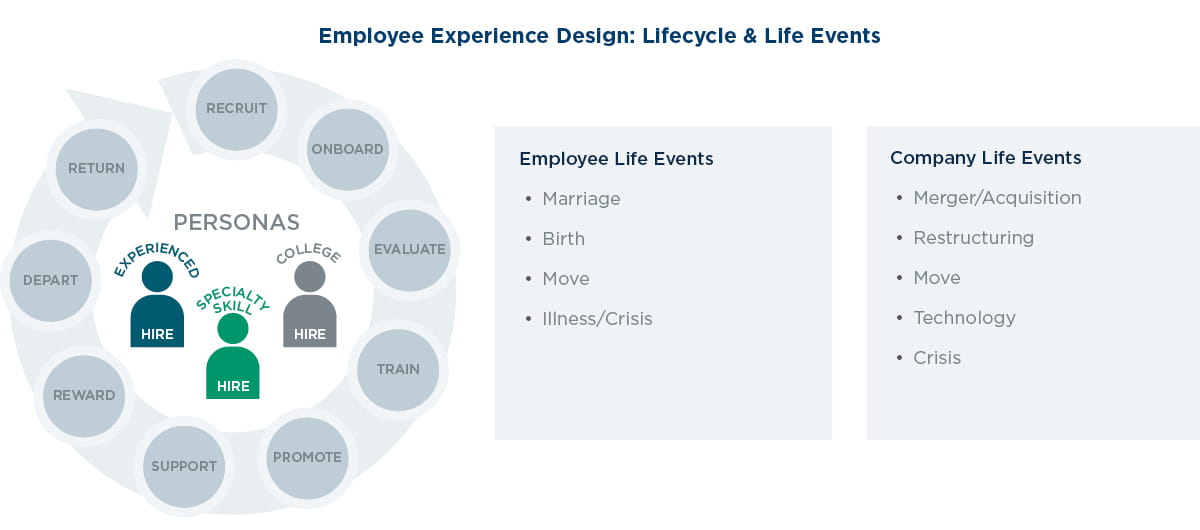
April 2019 | Point of View
Want better customer experience? Start with your employees.
Want better customer experience? Start with your employees.
Paying attention to your customers is crucial — but don’t forget that great customer experience (CX) starts with satisfied employees. In fact, a 5 percent increase in employee engagement has been shown to lead to a 3 percent jump in revenue. And companies with happy employees also see 81 percent higher customer satisfaction. Knowing that, it’s no surprise employee satisfaction is a priority for many executives.
But as companies spend millions to improve employee experience and engagement, they are struggling to see any consistent return from their investment. How bad is it? A Gallup study found that 87 percent of employees worldwide are not engaged.
I have found that engagement efforts today are failing because the focus has been primarily on implementing new technology. For lasting, deeper employee engagement, that focus needs to shift toward designing employee experiences first, supported by technology secondarily.
Three ways to focus on EX to drive better CX
1. Define a Higher-Level Customer Purpose
Technology on its own only generates so much excitement, engagement, or satisfaction from employees. Same goes for a product, or even a paycheck. Organizations with the most engaged employees (and the most loyal customers) offer something more: a purpose.
Developing a North Star that’s only meaningful to the company or shareholders is a miss — the North Star needs to guide employees, too. At Patagonia, for instance, people aren’t just making coats: they’re taking part in something bigger, based on the belief that you can be warm and do good for the planet.
A purpose-driven North Star not only helps win employee hearts and minds but impacts how employee experiences are designed. It can even suggest the technology necessary to succeed. In short, by firmly establishing the why (a company’s goals and purposes), leaders can point to the how and what needed to get there.
What’s more, an employee North Star provides necessary guidance for those employing zero-based design (ZBD) as a way of innovating new business models while still keeping up with the day-to-day demands of a business. ZBD encourages an organization’s employees to adopt a mindset wherein the business starts from scratch and asks them to envision what the company could be without any preconceptions or existing models. Good North Stars provide a necessary touchstone to ensure that you’re moving in the right direction, and don’t get bogged down in tactical day-to-day issues.
2. Map the Employee Journey to Deliver Tailored Experiences to Your Workforce
Start by mapping known pain points or opportunities for improvement in the employee lifecycle (see figure). Alternatively, consider mapping the journey of an employee’s interactions with the workplace during personal life events (e.g. the birth of a child, marriage or illness), which may have a profound impact on how an employee feels about an employer’s support during those critical times. Similarly, consider mapping different employee’s journeys across company life events (e.g. a merger, relocation, re-structuring or downsizing) — again, situations that can cause tremendous anxiety and undermine or cement an employee’s advocacy for the company.
A large food retailer adapted this process by conducting a “week in the life” study. The retailer combined quantitative data — attained by shadowing employees and completing research on job descriptions, training and work design — with qualitative information from interviews and workshops. This allowed them to create a journey map depicting a “week in the life” of a manager that highlighted time spent across a typical day and week, as well as that manager's key challenges.
By understanding the breakdown of where time was allocated, the organization could spotlight opportunities to better align managers with value-add tasks they enjoyed — all while increasing operational effectiveness and serving customers better.
3. Emphasize Human-Centered Change Over Technology
It’s easy in today’s fast-paced world to become hypnotized by the latest technology fad that promises to save your company.
Don’t be fooled. The best companies focus on hiring the right people for their organization, and then use technology to best serve and support those people. Firms should design for humans and let the technology complement their strengths, rather than forcing them to adapt. Again, CX-based concepts can be applied here: employee personas, user job stories, prototyping and co-creation.
Take, for instance, a medical association’s recent update of their intranet. Rather than simply thrusting a new technology rollout on their employees, they took a human-centered approach. They held workshops with employees at all levels and solicited constant input through surveys and in-depth conversations. They set strict objectives that aligned with their broader strategic vision (aka North Star). They then created several employee personas that put the user at the center and began prototyping the new interface. The process was casual and iterative before and after, allowing people to feel as though they took part in the new intranet’s creation. With a human-centered approach the results were significant: Daily intranet use increased 1,300 percent and internal email traffic dropped 12 percent.
As this organization's initiative shows, patience is key. Changing technology can happen fast, but changing the minds, hearts, behaviors and habits of people takes time. It requires continuous learning, cross-function collaboration and strong communication each step of the way.
Improving Employee Experiences Is a Journey
These three concepts are just the start of what should be a patient, thoughtful journey to improving employee experiences. It won’t happen overnight — mindset shifts rarely do. So don’t go it alone. Go to your business’s CX or CS professionals for guidance and engage the CFO to make the business case around why these initiatives matter. Whatever your path may be, improving the employee experience is crucial to any company’s customer experience.
This article originally appeared on CMSWire.com.

